The DraCo is internally speaking, composed of a basic set of three different cards/components named after stars of the Draco constellation (Rastaban, Eltanin and Altais). Of course, eventually DraCos offered a much wider variety of cards and expansions than these, but then, these are the bare essential ones to get a working unit.
Altais, the DraCo graphics card:
(picture credit: Pavel Svetlik
taken from http://amiga.resource.cx/)
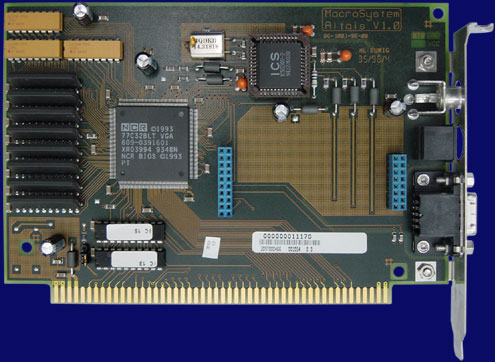
This is a specially designed graphics card, it is basically an Amiga Retina ZIII with a changed product id and the ability to create vertical blank interrupts. Its design is based on the NCR 77C32BLT chipset which sports 4MB of video memory. This card, unlike ordinary Amigas, displays its output at 31Khz making it compatible with ordinary PC compatible monitors with a classic VGA style 15 pin connector. In this particular case, the Altais does not interface the DraCo with Zorro III slots, but it does it thru its custom DraCo Direct bus, which is faster, and it does not require any custom Amiga chipset (Buster chip) to function.
This card, also has a super video (Y/C) and composite output, but these are only available when the optional V-Code module, which can be either PAL or NTSC, is plugged to the blue sockets on the Altais pcb.
It is important to know that there are three RTG enviroments which can happily work with this graphics card, supplying its functions to the underlying AmigaOS. These are the ancient RetinaEmu, the more compatible Cybergraphics, and the popular Picasso96. Each one having its own strengths and weaknesses.
The Altais can drive displays in 24 bit resolutions at up to screen sizes of 1152 x 864. It can also work in 16 and even 8 bit modes, where it can extend its screen size up to a maximum of 2400 x 1200.
Rastaban, the DraCo busboard:
(picture credit:
taken from http://www.amigahistory.co.uk/draco.html)

This card has the peculiarity of being a passive backplane, (its design loosely resembles the antique S-100 busboard present in early 8 bit computers) that now holds the keyboard and AT power supply connections, and most importantly, holds the rest of the DraCo expansion devices by either means of five Zorro II slots (which are somewhat compatible with Amiga devices), or its 3 custom DraCo Direct slots. It also contains two slots which are reserved for the Eltanin cpu card.
Eltanin, the soul of the DraCo:
(picture credit: Tord and Valeria Magnussen
taken from http://amiga.resource.cx/)
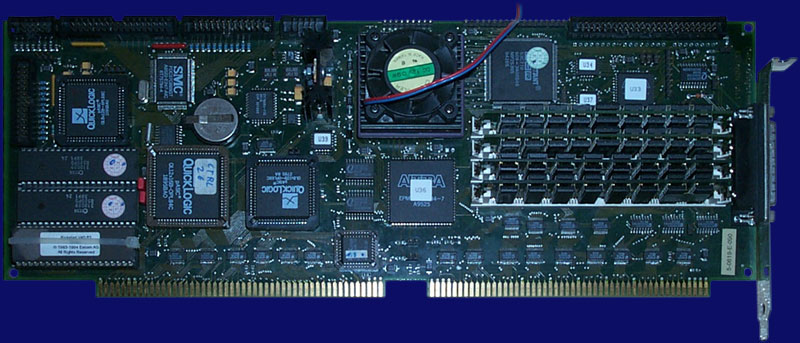
Eltanin, contains the most important components of the DraCo: the 68060 microprocessor, clocked at 50 mhz, the SCSI II interface based on the NCR 53C710 chipset, four memory banks which can hold up to 128MB in 72 pin simms, an AmigaOS 3.1 kickstart rom, and the good old real time clock.
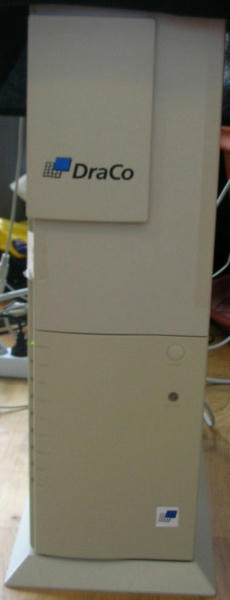
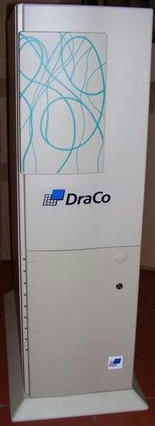
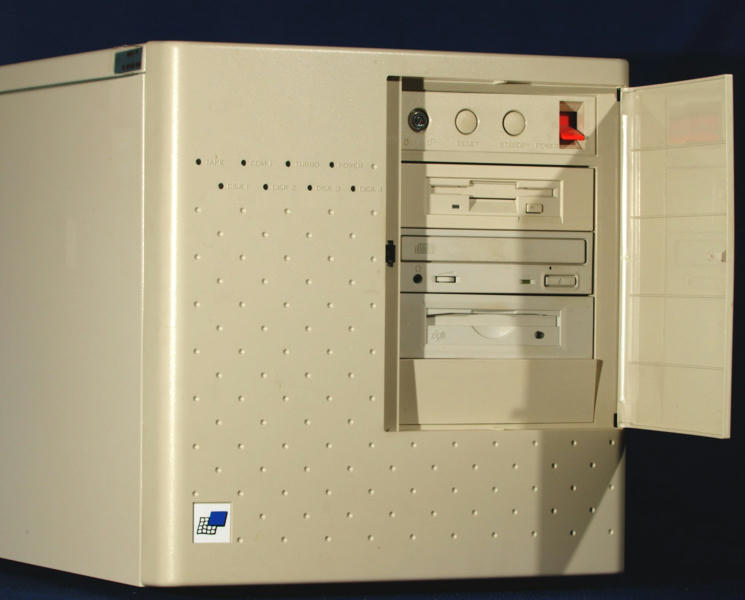

 This card has the peculiarity of being a passive backplane, (its design loosely resembles the antique S-100 busboard present in early 8 bit computers) that now holds the keyboard and AT power supply connections, and most importantly, holds the rest of the DraCo expansion devices by either means of five Zorro II slots (which are somewhat compatible with Amiga devices), or its 3 custom DraCo Direct slots. It also contains two slots which are reserved for the Eltanin cpu card.
This card has the peculiarity of being a passive backplane, (its design loosely resembles the antique S-100 busboard present in early 8 bit computers) that now holds the keyboard and AT power supply connections, and most importantly, holds the rest of the DraCo expansion devices by either means of five Zorro II slots (which are somewhat compatible with Amiga devices), or its 3 custom DraCo Direct slots. It also contains two slots which are reserved for the Eltanin cpu card.